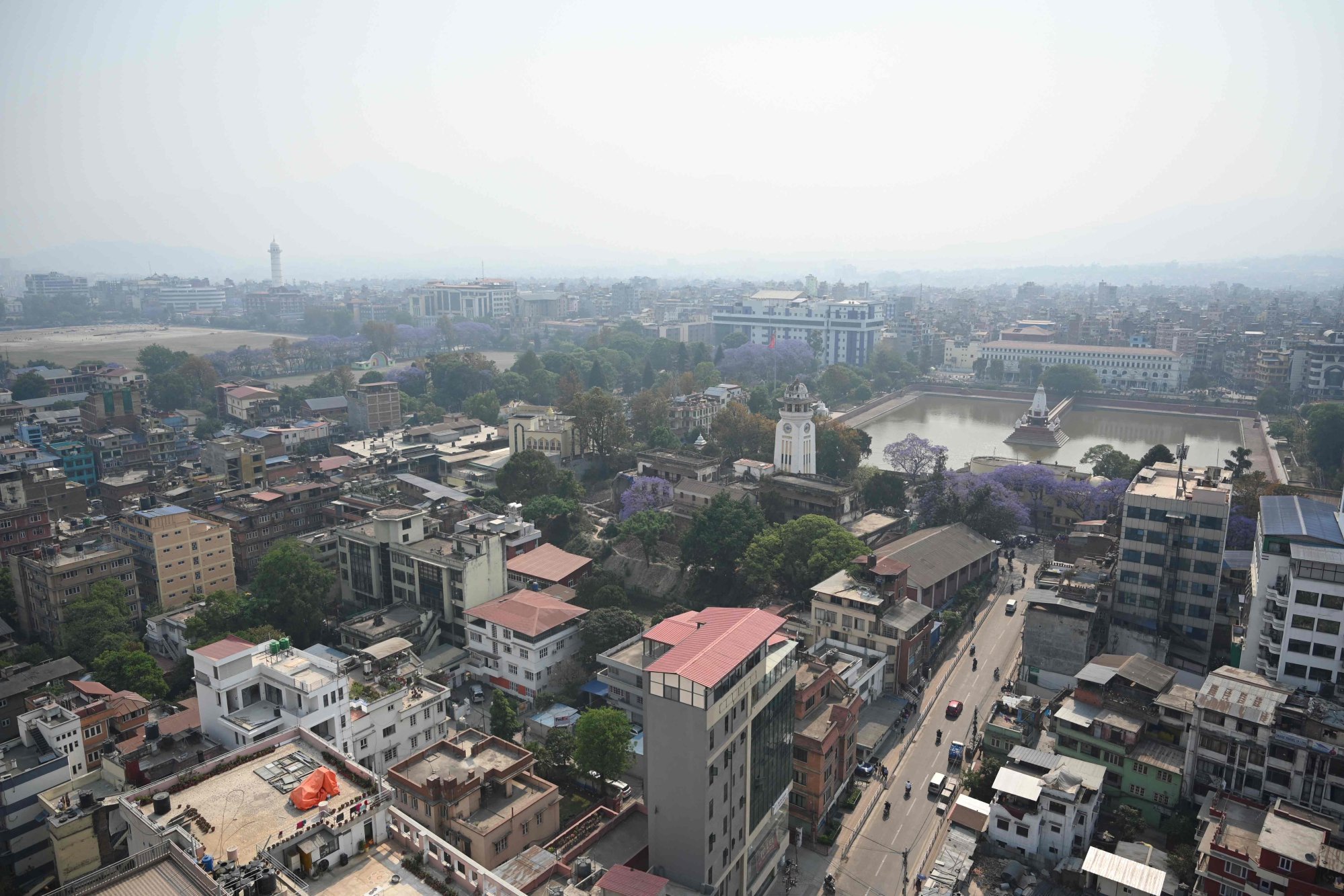
Can Nepal get a lift from wooing by India and China to become a middle-income economy?
- Nepal’s ‘dysfunctional’ politics may curb its economic ambition amid jostling between India and China to step up their investments in the country
- Nepal also needs to cut red tape and develop a robust bureaucracy to achieve its aim of becoming an investment hub, economists say
Potential investors pledged during the summit to inject as much as 9.13 billion Nepali rupees (US$68.3 million) into the country, which is still navigating its transition from a centralised monarchy to a federal democratic republic under its 2015 Constitution, as well as an economic transformation from being less reliant on international aid to becoming a hub for global investments.
“Our unwavering commitment to liberal economic policies lays the foundation for a vibrant and investor-friendly business environment,” said Nepal Prime Minister Pushpa Kamal Dahal.
“Nepal’s strategic location, situated between emerging markets India and China, signifies it as an ideal investment destination,” he told the summit during its opening on Sunday.

While India and China did not directly compete with each other to invest in the projects offered at the summit, their overlapping interests could be seen in the resulting deals that were announced.
Unsurprisingly, delegates from India and China formed the largest contingent among the 2,400 representatives from various countries who attended the summit. While India sent about 150 participants, China’s delegation was twice as large.
The airports were built with Chinese funding totalling hundreds of millions of dollars. In contrast, India has hesitated to open up air routes to Nepal due to the two airports’ link to Beijing’s Belt and Road Initiative.
Spring revival: Nepal’s communities lead efforts to preserve water source
“Air and road links and border checkpoints are progressing well. Feasibility studies of the cross-border railway and cross-border transmission lines are moving forward. That’s why today’s summit holds a very special significance,” said Luo Zhaohui, chairman of the state-run China International Development Cooperation Agency, during his address at the event.
Piyush Goyal, India’s federal minister for commerce and industry, said in a speech at the event via a video call: “We will continue to expand our trading and business relationship. I urge Indian investors across the globe to invest in Nepal, to seize the opportunity, and become a part of emerging Nepal.”
Tapping hydropower potential
Landlocked Nepal has been wooing foreign investors, primarily from its neighbours, in various sectors, particularly hydropower.
The impoverished South Asian country is home to eight of the world’s largest mountain peaks, with dozens of rivers flowing from them, offering immense potential for harnessing hydropower.
While the country currently produces 3,200MW of hydropower, multiple large-scale projects with a combined capacity of 5,568MW are in the pipeline.

India is heavily invested in Nepal’s hydropower projects, while China is seeking to gain a foothold in the sector.
However, the Nepali government is hesitant to accept Chinese investment in hydropower due to concerns that India and Bangladesh – the only two markets for the electricity generated – may be reluctant to purchase power from China-linked projects, according to economists.
“From the Chinese side, there is considerable interest in hydropower and related projects. From the Indian side, buying energy for Chinese-invested projects is hesitant. Chinese investors will have a tough time selling this energy generation,” said Jaya Jung Mahat, a policy economist with the Nepali Institute of Policy Research.
“Transporting energy to Chinese territories is challenging due to the high mountains between the countries. It’s easier for Indian investors and the [Delhi] government can facilitate the purchase,” Mahat added.
YouTube series aims to change face of Nepali journalism through human stories
Stifling bureaucracy
Nepal’s transition from a low-income nation to a middle-income nation can only succeed with the help of India and China, economists say.
“Nepal is transitioning from being a recipient of aid and development help to attracting investments. All countries are substituting aid with trade and investment,” said Sujeeva Shakya, founder-chair of Nepal Economic Forum, a Kathmandu-based economic policy and research institution.
“We need US$7 billion-US$8 billion [in the coming years] to grow our economy at an accelerated pace. We have 600,000 people entering the job market. Wherever the investment comes from, it doesn’t make any difference,” Shakya said.
Critics question, however, whether events like the summit can help improve Nepal’s economic outlook unless its government undertakes measures to improve the country’s political stability, cut red tape and develop a robust bureaucratic framework.

“The leadership, governance system, and population are divided along political party lines and have become toxic and dysfunctional,” said Kedar Neupane, an economist at the Nepal Policy Institute think tank.
The country’s leadership should address bureaucratic and policy hurdles to entice foreign investors, Neupane said.
“Successive governments in Nepal have failed to see things from a realistic economic perspective due to political divisions.
“This summit may not deliver significant new investments beyond some pledges ... other than serving as self-amusement for the organisers.”
In response to the criticisms, Investment Board Nepal CEO Sushil Bhatta said the government was determined to tackle the difficulties that companies faced in doing business in the country, citing the recent introduction of new laws to remove investment bottlenecks.
He said: “The higher political leadership has expressed commitment for continued reforms in the investment regime.”

